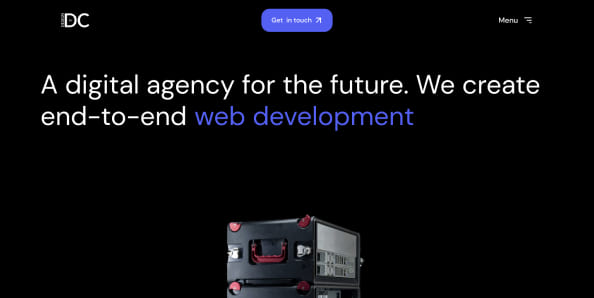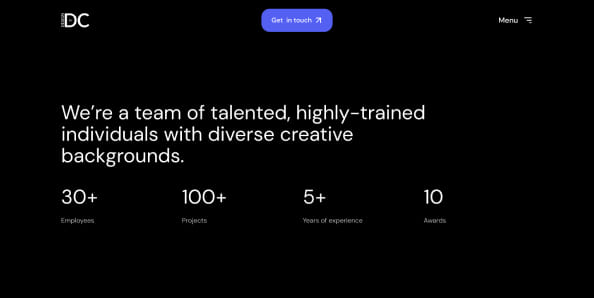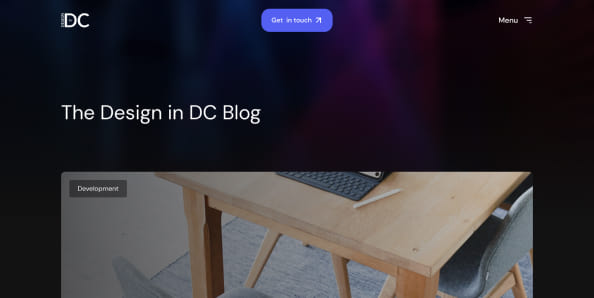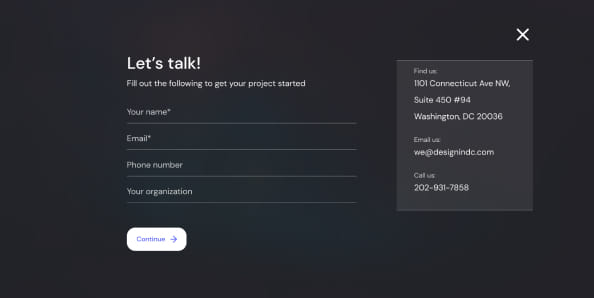Digital Marketing Cheat Sheet: Your Guide to a Successful Campaign
Unlock the Secrets to Successful Digital Marketing
Today, a solid understanding of digital marketing is essential for any business or individual looking to thrive online. However, many people shy away from digital marketing because they don’t fully comprehend its intricacies.
If you find yourself in this position, fear not!
In this comprehensive cheat sheet, we will guide you through the fundamental concepts of digital marketing, including marketing funnels, various marketing channels, and tips to achieve the best results. So, let’s dive in and unravel the mysteries of the digital marketing world.
How Does Digital Marketing Help You Find Your People?
Digital marketing involves a combination of media, written content, website design, mobile marketing, messaging, and social media. These elements create a compelling user experience that captures attention and drives more qualified leads. Let’s look at each element more closely.
Media
Incorporating visually appealing elements such as custom photography and videography can significantly enhance user engagement. Media assets help convey your message more effectively and leave a lasting impression on your target audience.
Written Content
Well-crafted written content is the cornerstone of digital marketing. A comprehensive content strategy includes blog posts, articles, and website copy. Compelling written content helps educate, inform, and persuade users to take action.
Website Design and Development

A visually appealing and user-friendly website is crucial in engaging users. A well-designed website ensures seamless navigation, effectively showcases your products or services, and encourages visitors to explore further.
Mobile Marketing
With the increasing use of smartphones, mobile marketing has become an indispensable aspect of digital marketing. Optimizing your marketing efforts for mobile devices ensures that you reach a wider audience and provide a seamless experience across different devices.
Messaging
Utilizing messaging platforms such as SMS and email lets you reach your audience directly and personalize your communication. This direct line of communication helps build relationships and keeps your brand top of mind.
Social Media
Social media platforms offer an excellent opportunity to personally engage with your target audience. Creating compelling social media content and actively interacting with your followers can build brand loyalty and increase user engagement.
What is Digital Marketing Funneling?
Understanding the concept of digital marketing funneling is vital to guide users through their journey and optimize conversions effectively. The digital marketing funnel consists of several stages that users go through before becoming loyal advocates of your brand.
What Are the Stages of a Digital Marketing Funnel?
The digital marketing funnel typically consists of five stages
- Awareness
- Engagement
- Conversion
- Retention
- Advocacy.
To effectively guide users through the digital marketing funnel, it’s crucial to understand the different stages of their journey. Let’s explore each stage in detail:
1. Awareness
Users become familiar with your brand and its offerings at the awareness stage. The initial introduction is where you aim to capture their attention and pique their interest. Search engine optimization (SEO), content marketing, and social media advertising are vital to brand awareness.
2. Engagement
Once users know your brand, engaging them and encouraging further interaction is the next step. You can achieve this through captivating content, interactive website features, and personalized messaging. The goal is to establish a connection and build trust with your audience.
3. Conversion
In the conversion stage, users purchase or take the desired action, such as filling out a form or subscribing to a newsletter. This stage requires a seamless user experience, clear call-to-action, and persuasive messaging to drive conversions.
4. Retention
After successfully converting users, the focus shifts to retaining them as loyal customers. It involves providing exceptional customer service, personalized offers, and ongoing communication to foster loyalty and repeat business.
5. Advocacy
Your loyal customers become brand ambassadors at the advocacy stage and spread positive word-of-mouth. Encouraging advocacy can be achieved through referral programs, social media campaigns, and exceptional customer experiences. Happy customers who advocate for your brand can be a powerful asset in attracting new customers.
Three Effective Ways to Analyze Your Marketing Funnel
1. Key Performance Indicators (KPIs)
To gauge the effectiveness of your digital marketing efforts, tracking and analyzing key performance indicators (KPIs) at each stage of the funnel is essential. These KPIs include website traffic, click-through, conversion, and customer retention rates.
2. User Touchpoints
Throughout the user journey, there are multiple touchpoints where users interact with your brand. These touchpoints include website visits, social media engagement, email interactions, and more. Understanding these touchpoints allows you to tailor your marketing strategies accordingly.
3. Tracking Measurable Data
Utilizing tools like Google Analytics, you can gather valuable user behavior and preferences data. Analyzing this data helps identify trends, optimize marketing techniques, and improve overall user experience.
What Are Marketing Channels?
Marketing channels refer to the different platforms and mediums through which you reach your target audience. Let’s explore some of the most effective digital marketing channels:
Display Advertising
Display advertising involves placing visually appealing ads on websites, apps, or social media platforms. These ads can be in the form of banners, videos, or interactive media. Display advertising allows you to reach a wide audience and increase brand visibility.
Native Advertising
Native advertising seamlessly integrates with the platform it appears on, providing a more organic and less disruptive user experience. Native ads match the look and feel of the platform, making them appear more natural and engaging.
Search Engine Marketing
Search engine marketing (SEM) involves paid advertising on search engine result pages. By bidding on relevant keywords, you can ensure your ads appear at the top of search results, increasing visibility and driving targeted traffic to your website.
Website
Your website is a vital marketing channel, a central hub for your online presence. It allows you to showcase your products or services, provide valuable information to users, and drive conversions.
Inbound/Content Marketing
Inbound marketing focuses on creating valuable and informative content to attract, engage, and delight your target audience. You can establish yourself as a trusted authority in your industry by providing relevant content through blog posts, videos, and other resources.
Email Marketing
Email marketing remains a highly effective channel for nurturing leads and engaging with your audience. By sending personalized and targeted emails, you can stay top of mind, drive conversions, and build long-lasting relationships with your subscribers.
Social Media Marketing

Social media platforms provide a powerful channel for connecting with your audience, building brand awareness, and driving engagement. You can reach a wide audience and foster meaningful interactions by creating compelling social media content and leveraging various platforms.
Steps to Implement a Digital Marketing Strategy
To implement an effective holistic digital marketing strategy, follow these steps:
- Define Your Goals: Identify what you want to achieve through your digital marketing efforts. Setting clear goals is essential, whether it’s increasing brand awareness, driving sales, or improving customer retention.
- Identify Your Target Audience: Understand who your ideal customers are, their preferences, and demographics. This knowledge will help you tailor your marketing campaigns and messaging to resonate with your target audience.
- Choose the Right Digital Channels: Based on your target audience and goals, select the most appropriate digital marketing channels to reach and engage your audience effectively.
- Develop Compelling Content: Create valuable and engaging content that addresses the needs and interests of your target audience. This content includes blog posts, videos, social media posts, or email newsletters.
- Implement Tracking and Analytics: Utilize tools such as Google Analytics to track the performance of your digital marketing campaigns. Analyze the data to gain insights, identify areas for improvement, and optimize your strategies accordingly.
Continuously Optimize: Digital marketing is an ongoing process, so constantly monitoring and optimizing your campaigns is important. Test different strategies, measure their impact, and refine your approach to achieve the best results.
Tips to Get the Best Digital Marketing Results
To maximize your digital marketing efforts, consider the following tips:
- Understand Your Target Audience: The more you know about your target audience, the better you can tailor your marketing campaigns to their needs and preferences.
- Utilize User-Friendly Web Design: Ensure your website is visually appealing, easy to navigate, and optimized for mobile devices. A seamless user experience will keep visitors engaged and increase conversion rates.
- Create Compelling Call-to-Actions: Communicate what action users want to take on your website or marketing materials. Use persuasive language and design elements to prompt users to take action.
- Leverage the Power of SEO: Implement effective optimization strategies to improve your website’s visibility in search engine results. You drive organic traffic and increase your chances of reaching your target audience.
- Utilize Paid Advertising: Consider investing in paid advertising to increase your brand’s visibility and reach. PPC campaigns allow you to target specific keywords and demographics, ensuring the right audience sees your ads.
- Monitor and Adapt: Continuously monitor the performance of your digital marketing campaigns and adapt your strategies based on the data. Stay ahead of the competition and maximize your ROI.
Digital marketing is a powerful tool to help businesses and individuals thrive online. By understanding the concepts of marketing funnels and different marketing channels and implementing effective strategies, you can unlock the full potential of digital marketing. So, embrace the digital revolution, utilize this cheat sheet, and watch your online presence soar!
Tell Your Story and Drive More Sales with Design In
From website design & development to branding, media creation, and app development, Design In helps you tell a unique story that amplifies your brand and sets you apart. Contact us today and let us help you develop an effective marketing strategy that drives more conversions and puts your business front and center in the marketplace.












